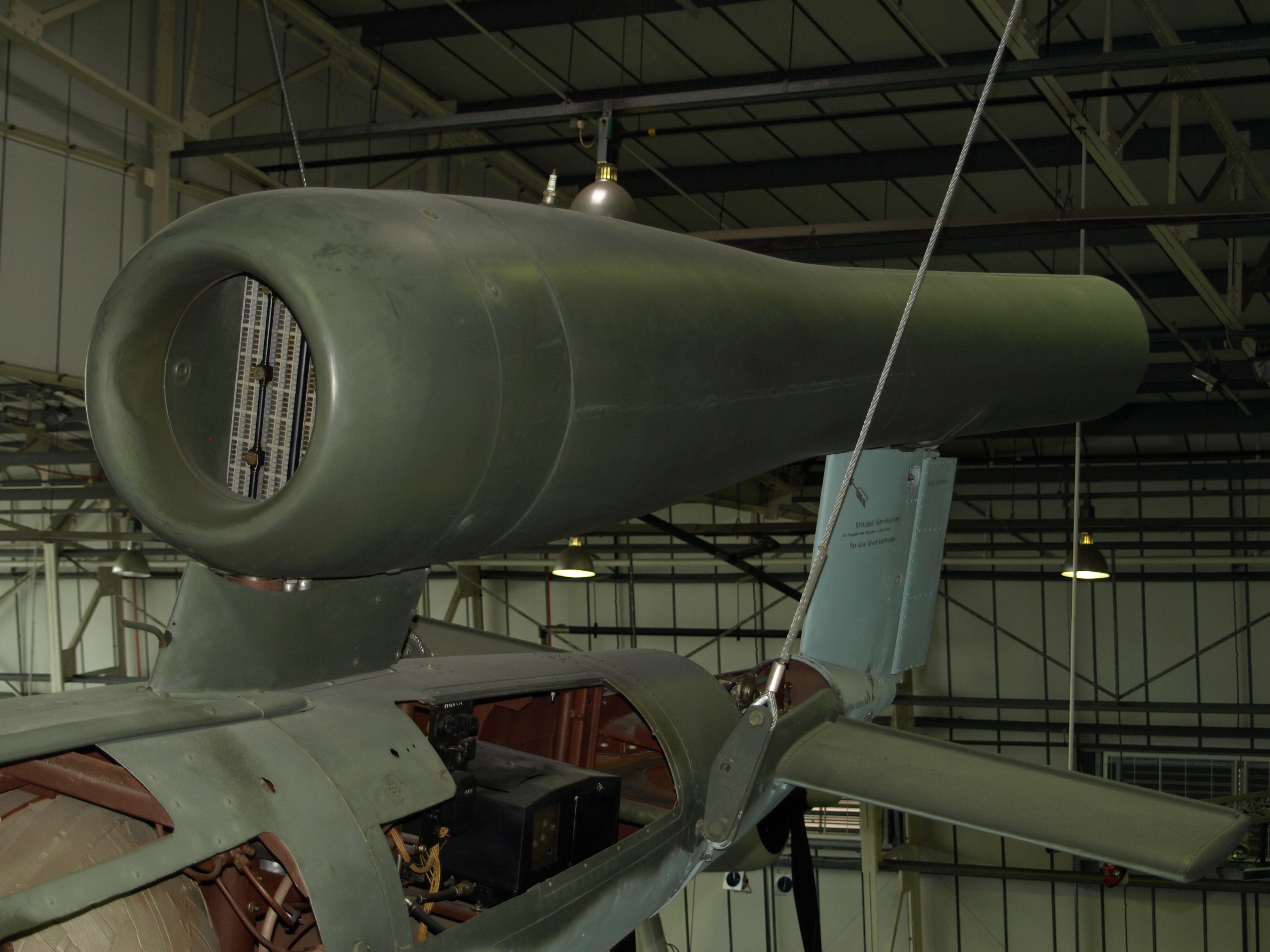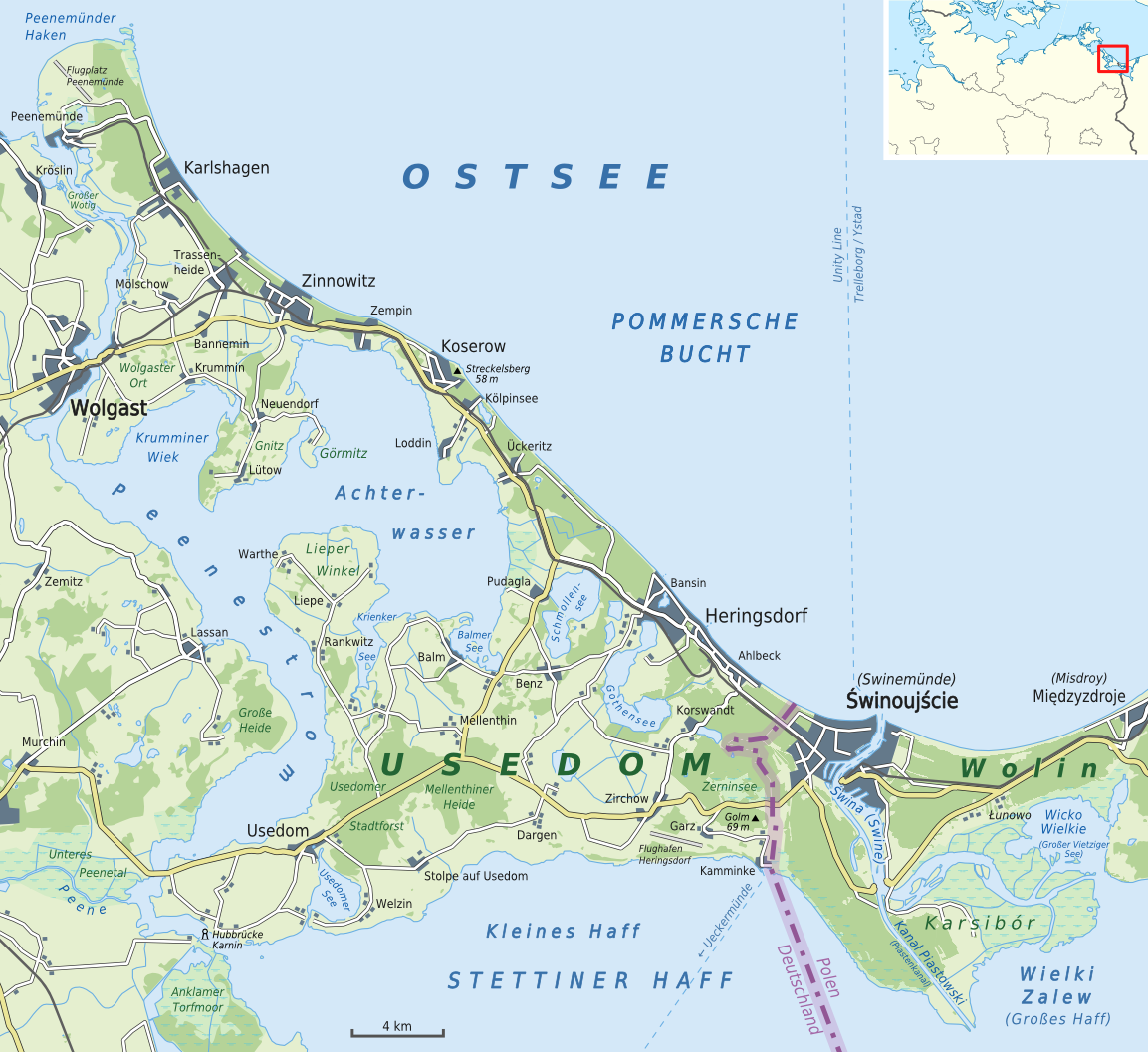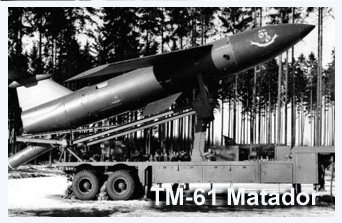|
Republic-Ford JB-2
The Republic-Ford JB-2, also known as the Thunderbug, KGW and LTV-N-2 Loon, was a United States copy of the German V-1 flying bomb. Developed in 1944, and planned to be used in the United States invasion of Japan ( Operation Downfall), the JB-2 was never used in combat. It was the most successful of the United States Army Air Forces Jet Bomb (JB) projects (JB-1 through JB-10) during World War II. Postwar, the JB-2 played a significant role in the development of more advanced surface-to-surface tactical missile systems such as the MGM-1 Matador and later MGM-13 Mace. Wartime development The United States had known of the existence of a new German secret weapon since 22 August 1942 when a Danish naval officer discovered an early test version of the V-1 that had crashed on the island of Bornholm, in the Baltic Sea between Germany and Sweden, roughly 120 kilometers (75 miles) northeast of the V-1 test launch ramp at the Peenemünde Army Research Center, on Germany's Usedom I ... [...More Info...] [...Related Items...] OR: [Wikipedia] [Google] [Baidu] |
National Museum Of The United States Air Force
The National Museum of the United States Air Force (formerly the United States Air Force Museum) is the official museum of the United States Air Force located at Wright-Patterson Air Force Base, northeast of Dayton, Ohio. The NMUSAF is the oldest and largest military aviation museum in the world, with more than 360 aircraft and missiles on display. The museum draws about a million visitors each year, making it one of the most frequently visited tourist attractions in Ohio. History The museum dates to 1923, when the Engineering Division at Dayton's McCook Field first collected technical artifacts for preservation. In 1927, it moved to then-Wright Field in a laboratory building. In 1932, the collection was named the Army Aeronautical Museum and placed in a WPA building from 1935 until World War II. In 1948, the collection remained private as the Air Force Technical Museum. In 1954, the Air Force Museum became public and was housed in its first permanent facility, Building 89 ... [...More Info...] [...Related Items...] OR: [Wikipedia] [Google] [Baidu] |
Northrop Corporation
Northrop Corporation was an American aircraft manufacturer from its formation in 1939 until its 1994 merger with Grumman to form Northrop Grumman. The company is known for its development of the flying wing design, most successfully the B-2 Spirit stealth bomber.Parker, Dana T. ''Building Victory: Aircraft Manufacturing in the Los Angeles Area in World War II,'' pp. 93-106, Cypress, CA, 2013. . History Jack Northrop founded 3 companies using his name. The first was the Avion Corporation in 1928, which was absorbed in 1929 by the United Aircraft and Transport Corporation as a subsidiary named "Northrop Aircraft Corporation" (and later became part of Boeing). The parent company moved its operations to Kansas in 1931, and so Jack, along with Donald Douglas, established a "Northrop Corporation" located in El Segundo, California, which produced several successful designs, including the Northrop Gamma and Northrop Delta. However, labor difficulties led to the dissolution of the c ... [...More Info...] [...Related Items...] OR: [Wikipedia] [Google] [Baidu] |
Peenemünde
Peenemünde (, en, "Peene iverMouth") is a municipality on the Baltic Sea island of Usedom in the Vorpommern-Greifswald district in Mecklenburg-Vorpommern, Germany. It is part of the ''Amt'' (collective municipality) of Usedom-Nord. The community is known for the Peenemünde Army Research Center, where the world's first functional large-scale liquid-propellant rocket, the V-2, was developed. Geography The village with its seaport is located on the westernmost extremity of a long sand-spit, where the Peene empties into the Baltic Sea, in the northwestern part of Usedom Island. To the southeast it borders on the sea resort of Karlshagen. Peenemünde harbour can be reached by ferry boat across the Peene from Kröslin, liners also run along the Baltic coast to Rügen Island. The local railway station is the northern terminus of the ''Usedomer Bäderbahn'' line to Zinnowitz. Air service for the village is available at the Peenemünde Airfield. History During the 10th and 11th cen ... [...More Info...] [...Related Items...] OR: [Wikipedia] [Google] [Baidu] |
Peenemünde Airfield
Peenemünde Airfield is an airfield along the Baltic Sea north of Peenemünde, Germany. Today round trips in light aircraft take place from Peenemünde Airfield. Bus tours are also available, on which one can visit the former shelters of the NVA and the remnants of the V-1 flying bomb facilities. Because of its long runway the airfield Peenemünde is also a location for flight schools. History On April 2, 1936, the Reich Air Ministry paid to the town of Wolgast for the whole Northern peninsula of Usedom. The airfield began service on 1 April 1938, and on the same date, the Air Ministry officially separated Peenemünde-West from the joint command that included the adjacent Army Research Center Peenemünde. As ''Werk West'', the Luftwaffe Test Site (german: Erprobungsstelle der Luftwaffe) and under control from the central ''Erprobungsstelle Rechlin'' facility inland, the Peenemünde-West coastal facility was used for testing experimental aircraft (''Erprobungsflugzeug'') s ... [...More Info...] [...Related Items...] OR: [Wikipedia] [Google] [Baidu] |
Fieseler
The Gerhard Fieseler Werke (GFW) in Kassel was a German aircraft manufacturer of the 1930s and 1940s. The company is remembered mostly for its military aircraft built for the Luftwaffe during the Second World War. History The firm was founded on April 1, 1930 as Fieseler Flugzeugbau Kassel by World War I flying ace and aerobatic champion Gerhard Fieseler. Fieseler had been a manager for the Raab-Katzenstein, but when this company went bankrupt, Fieseler bought a sailplane factory in Kassel and quickly turned it to building sports planes. At the same time, Fieseler still custom-built sailplanes for some of Germany's most prominent designers and pilots, including Wolf Hirth's "Musterle" and Robert Kronfeld's "Wien" and "Austria" (for many years the largest sailplane ever built). In 1934, the company achieved prominence when Fieseler won the World Aerobatics Championship in an aircraft his company had built, the F2 Tiger. This was followed by the highly successful F5, generall ... [...More Info...] [...Related Items...] OR: [Wikipedia] [Google] [Baidu] |
Usedom Island
Usedom (german: Usedom , pl, Uznam ) is a Baltic Sea island in Pomerania, divided between Germany and Poland. It is the second largest Pomeranian island after Rügen, and the most populous island in the Baltic Sea. It is north of the Szczecin Lagoon estuary of the Oder river. About 80% of the island belongs to the German district of Vorpommern-Greifswald in the state of Mecklenburg-Vorpommern. The eastern part and the largest city on the island, Świnoujście, are part of the Polish West Pomeranian Voivodeship. The island's total area is – in the German part and in the Polish part. Its population is 76,500 (German part 31,500; Polish part 45,000). With an annual average of 1,906 hours of sunshine, Usedom is the sunniest region of both Germany and Poland, and it is also one of the sunniest islands in the Baltic Sea, hence its nickname "Sun Island" (german: Sonneninsel, pl, Wyspa Słońca). The island has been a tourist destination since the Gründerzeit in the 19th centu ... [...More Info...] [...Related Items...] OR: [Wikipedia] [Google] [Baidu] |
Peenemünde Army Research Center
The Peenemünde Army Research Center (german: Heeresversuchsanstalt Peenemünde, HVP) was founded in 1937 as one of five military proving grounds under the German Army Weapons Office (''Heereswaffenamt''). Several German guided missiles and rockets of World War II were developed by the HVP, including the V-2 rocket. The works were attacked by the British in Operation Crossbow from August 1943, before falling to the Soviets in May 1945. History On April 2, 1936, the aviation ministry paid 750,000 reichsmarks to the town of Wolgast for the whole Northern peninsula of the Baltic island of Usedom. By the middle of 1938, the Army facility had been separated from the Luftwaffe facility and was nearly complete, with personnel moved from Kummersdorf. The Army Research Center (''Peenemünde Ost'') consisted of ''Werk Ost'' and ''Werk Süd'', while ''Werk West'' (Peenemünde West) was the Luftwaffe Test Site (), one of the four test and research facilities of the Luftwaffe, with i ... [...More Info...] [...Related Items...] OR: [Wikipedia] [Google] [Baidu] |
Baltic Sea
The Baltic Sea is an arm of the Atlantic Ocean that is enclosed by Denmark, Estonia, Finland, Germany, Latvia, Lithuania, Poland, Russia, Sweden and the North and Central European Plain. The sea stretches from 53°N to 66°N latitude and from 10°E to 30°E longitude. A marginal sea of the Atlantic, with limited water exchange between the two water bodies, the Baltic Sea drains through the Danish Straits into the Kattegat by way of the Øresund, Great Belt and Little Belt. It includes the Gulf of Bothnia, the Bay of Bothnia, the Gulf of Finland, the Gulf of Riga and the Bay of Gdańsk. The " Baltic Proper" is bordered on its northern edge, at latitude 60°N, by Åland and the Gulf of Bothnia, on its northeastern edge by the Gulf of Finland, on its eastern edge by the Gulf of Riga, and in the west by the Swedish part of the southern Scandinavian Peninsula. The Baltic Sea is connected by artificial waterways to the White Sea via the White Sea–Baltic Canal and to the German ... [...More Info...] [...Related Items...] OR: [Wikipedia] [Google] [Baidu] |
Bornholm
Bornholm () is a Danish island in the Baltic Sea, to the east of the rest of Denmark, south of Sweden, northeast of Germany and north of Poland. Strategically located, Bornholm has been fought over for centuries. It has usually been ruled by Denmark, but also by Sweden and by Lübeck. The ruin of Hammershus, at the northwestern tip of the island, is the largest medieval fortress in northern Europe, testament to the importance of its location. Bornholm and Ertholmene comprise the last remaining Danish territory in Skåneland east of Øresund, having been surrendered to Sweden in 1658, but regained by Denmark in 1660 after a local revolt. The island is known as ("sunshine island") because of its weather and ("rock island") because of its geology, which consists of granite, except along the southern coast. The heat from the summer is stored in the rock formations and the weather is quite warm until October. As a result of the climate, a local variety of the common fig, known ... [...More Info...] [...Related Items...] OR: [Wikipedia] [Google] [Baidu] |
MGM-13 Mace
The Martin Mace was a ground-launched cruise missile developed from the earlier Martin TM-61 Matador. It used a new self-contained navigation system that eliminated the need to get updates from ground-based radio stations, and thereby allowed it to fly further beyond the front lines. To take advantage of this longer practical range, Mace was larger than Matador and could travel a longer total distance. The original A model used a ground-mapping radar system which required the missile to fly at low to medium altitudes. In 1959 a new inertial navigation system was introduced that offered similar accuracy but had no altitude limitation. By flying at higher altitudes the missile's range almost doubled with no other changes. This led to the B model of 1961, which was limited to fixed launching sites, unlike the A model's mobile trailers. Mace was replaced by the MGM-31 Pershing missile by then Secretary of Defence Robert McNamara, and later in its role as a cruise missile for West ... [...More Info...] [...Related Items...] OR: [Wikipedia] [Google] [Baidu] |
MGM-1 Matador
The Martin MGM-1 Matador was the first operational surface-to-surface cruise missile designed and built by the United States. It was developed after World War II, drawing upon their wartime experience with creating the Republic-Ford JB-2, a copy of the German V-1. The Matador was similar in concept to the V-1, but it included a radio command that allowed in-flight course corrections. This allowed accuracy to be maintained over greatly extended ranges of just under 1000 km. To allow these ranges, the Matador was powered by a small turbojet engine in place of the V-1's much less efficient pulsejet. Matador was armed with the W5 nuclear warhead, essentially an improved version of the Fat Man design that was lighter and had a smaller cross section. A single U.S. Air Force group, 1st Pilotless Bomber Squadron, was armed with the weapon, keeping them on alert with a six-minute launch time. It could be easily retargeted, unlike weapons using inertial guidance systems. Accurac ... [...More Info...] [...Related Items...] OR: [Wikipedia] [Google] [Baidu] |









.jpg)
